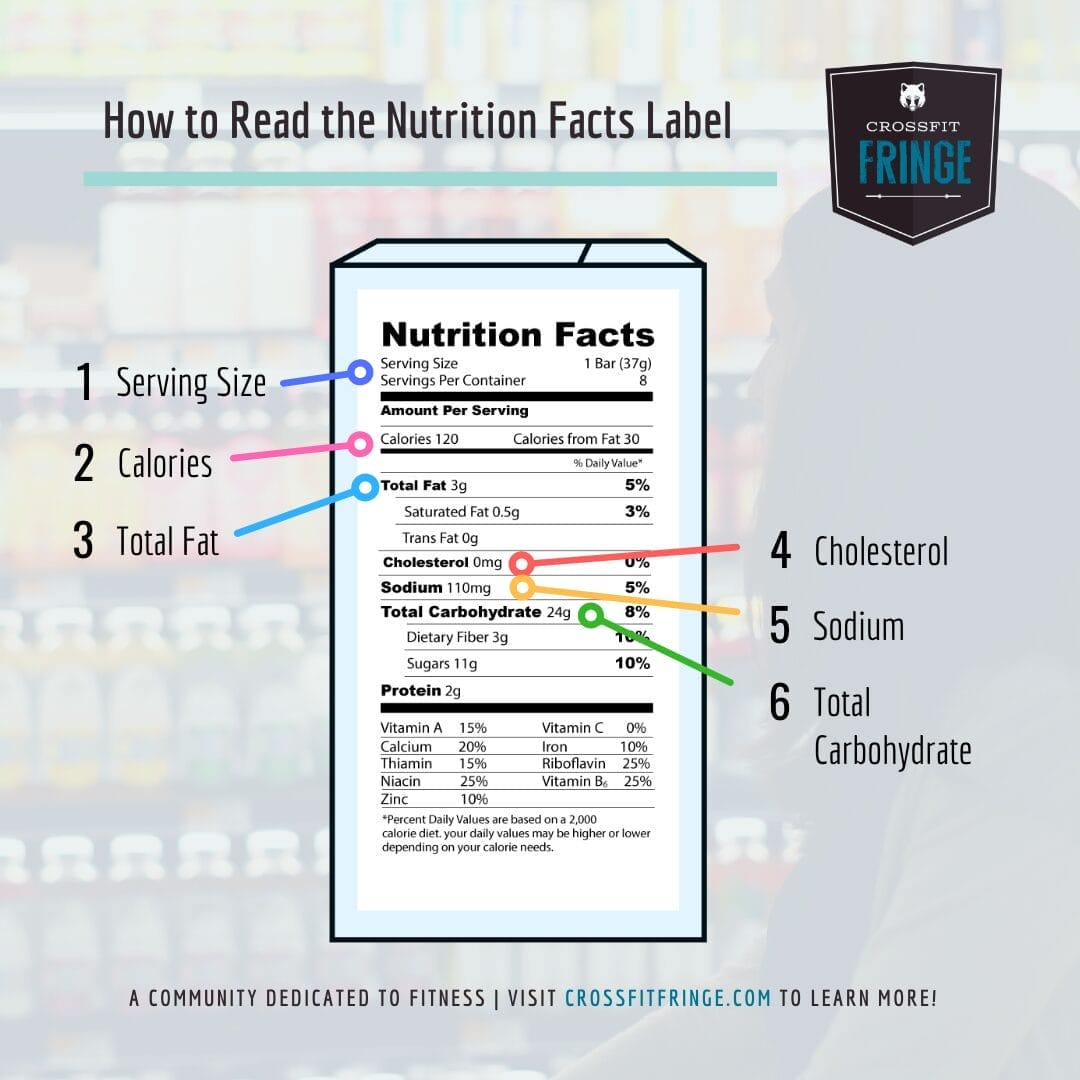Reading nutrition facts labels is hard. Understanding the black and white text and numbers on the label can make eating healthy feel impossible and overwhelming.
Those are the two statements I hear from nearly everyone I begin to work with on nutrition. I can certainly sympathize. There are a lot of areas to juggle, numbers to understand and none of us ever seem to be in the store when we have a lot of time to kill or patience to read each and every label.
Reading these labels is more than just reading the words and numbers. Most of us have a deficit in food literacy, which impacts our ability to process the words and numbers on the label.
The oft repeated advice about calories only adds to the confusion. We all hear ‘calories this and calories that’, but where do these calories come from, and how should we read and interpret our food labels?
Nutrition Facts Label breakdown
I’ve broken this down for you with some easy to remember tips that should help clear up some common misconceptions!
1. Serving Size
All of the nutrients and calories listed on the label are based on the amount of food found in one (1) serving. In this example one (1) bar constitutes one (1) serving and within the box there are eight (8) bars or servings. High sugar snacks and other unhealthy snacks often hide behind serving size so you don’t notice how quickly the servings add up!
2. Calories (per serving)
This is the total calories found per serving. Where do these calories come from? For every gram of Fat we get nine (9) calories, from Protein and Carbohydrates we get four (4) calories. These are our rough figures (see point #3 below for more details). If we are wanting to know the amount of calories in two (2) bars, we multiply the serving size by two (2). For calories in the whole box, we multiply by eight (8).
3. Total fat (per serving)
As just mentioned each gram of fat contains nine (9) calories. Fat is the most calorically dense macronutrient. In our example, one (1) bar has three (3) grams of fat which equates about 27 calories. On the label we see the company says there are 30 calories from fat. Notice you will often see small discrepancies on the label! Saturated fat is also nested in the fat section which makes a difference.
4. Cholesterol (per serving)
This is a part of the label we really shouldn’t be overly concerned about. We know that cholesterol is considered “bad,” but it’s more complex than just avoiding it or not eating it because if we don’t get cholesterol from our diet, our body produces it. Don’t go crazy and substantially up your cholesterol intake, but don’t fret about this number on every food label either.
5. Sodium (per serving)
Sodium = salt. Unless you have high blood pressure or a family history of high blood pressure, sodium is another part of the label to not be overly concerned about! If you’re working out regularly, eating healthy and not just consuming foods from boxes – more than likely your sodium intake is in check.
6. Total Carbohydrate (per serving)
Carbohydrates are the second macronutrient we’re encountering. Let’s get away from thinking there are good and bad carbs while we are on the subject. One (1) gram of carbohydrate contains four (4) calories. In this example, one (1) bar has 24 grams of carbs, which constitutes about 96 calories. But wait! This bar also has three (3) grams of fiber in it. What does that have to do with anything you may be wondering? Well, fiber is something our bodies can’t digest – so we subtract them from our total carbs to get net carbs. This means our bar really only has 21 grams of digestible carbohydrate or 84 calories. Also nestled under this section is sugar. Sugar is a simple carbohydrate, meaning it is quickly absorbed by the body. In general, we want to limit our intake of sugary foods for long term health.
7. Total protein (per serving)
The final macronutrient is protein which is the building block for our muscles! They are made up of varying length chains of amino acids. One (1) gram of protein is equivalent to four (4) calories. In our example, one (1) bar has two (2) grams of protein or about eight (8) calories. Our rule of thumb as athletes and healthy people should aim to consume about one (1) gram of protein per pound of bodyweight per day.
8. Vitamins/minerals (per serving)
These are our micronutrients! We need each of these in varying amounts daily. However explaining what each does in the context of this post is simply not realistic! If you’re interested do some research! These micronutrients are vital to different aspects of our bodies.
Let’s Check the Math
Now to compute the total calories, and add it up to see if we agree with our label!
We have three (3) grams of fat x nine (9) calories + 21 net carbohydrates (remember it was 24 grams but subtract three (3) grams for fiber) x four (4) calories + two (2) grams protein x four (4) calories and we get:
119 calories! Pretttty close to that label isn’t it??
And now we have a basic understanding of where calories come from and how to read our food labels!
Need more help understanding Nutrition Facts Labels?
If you’re tired of feeling like a mad scientist every time you sit down to eat, come join us at Fringe Nutrition. Start from wherever you are and experience the benefits of a habit-based, lifestyle-focused approach to nutrition. Start from wherever you are, and let our expert team of coaches guide you on your journey to a healthier and happier you.


